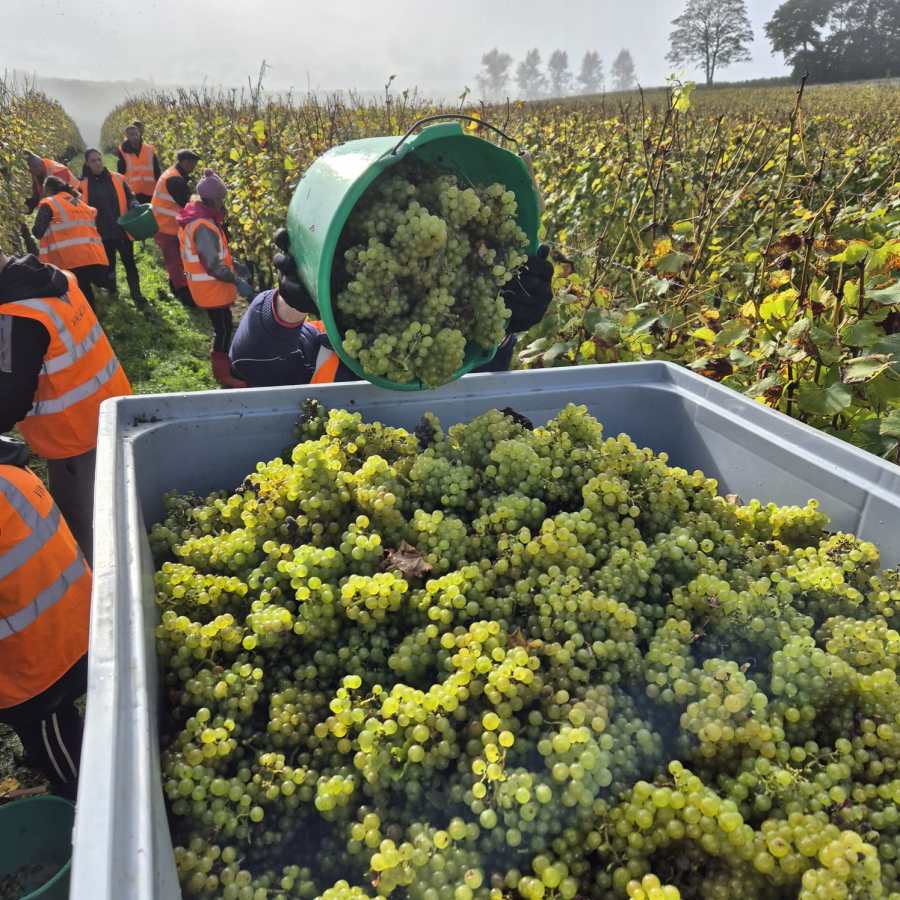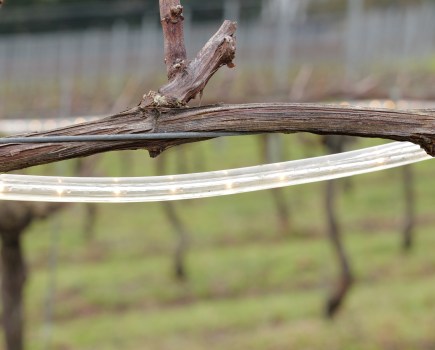No two seasons are ever the same, or so the saying goes.
2024 has proven to be one of the most challenging harvests in decades, ranking up there with the 2012 vintage in terms of difficulty. While it is too early to fully assess the quality of the 2024 grape harvest (as I write, we still have some late picking to complete), it is already clear that the season has fallen short. Yields and quality are significantly lower than what is usually expected across much of the UK.
The season began as it ended – wet. A damp spring, thankfully free of frost, started things off, and from then on it seemed as if a week didn’t go by without rain. While bud initiation from the 2023 season had given us reason to hope for a moderate to decent crop, the cool, damp stretch from May through August hindered progress. Flowering was impacted by persistent wet weather, leading to widespread millerandage in many varieties, which reduced yields.
2024 was also marked by high disease pressure from early on. Downy mildew became a key issue, appearing earlier than normal, with infections showing up in the canopy even before flowering. Those affected faced a relentless battle to prevent it from spreading through the canopy and onto the fruit. Where canopies were damaged, ripening was inevitably compromised. A cool, wet September and October compounded these issues, creating the perfect storm for those struggling to reach target ripeness levels.
The challenging conditions drove growers to trialling machine harvesting for the first time, which is faster and less costly compared to hand-harvesting. We were even machine harvesting at night!
However, it wasn’t the same story everywhere. We’ve seen notable variation between sites, even those in close proximity to each other. In general, vineyards along the south coast of England fared the worst, while areas to the north, including north Kent and up towards East Anglia, managed to ripen fruit more successfully. Remarkably, I’ve seen recent readings of 90+ oeschle in Pinot Noir from the Crouch Valley!
On the fruit brokering side, 2023’s bumper crop, where I handled over 600 tonnes, left wineries full. This abundance slowed early market activity, and I hadn’t received any enquiries all summer from potential buyers. But things changed in August as wineries began to realise this year’s lower yields and quality. Surprisingly, however, grape prices didn’t surge; instead, the excess from 2023 cushioned buyers. This year turned into a buyer’s market, with producers largely setting their own prices.
Given the season’s challenges, maintaining consistent quality remains essential, even in low-yield years. Vineyard management practices must be adapted to get the best quality possible under challenging conditions. This means reducing clusters early to focus on ripening quality – a tough decision when every tonne is critical for profitability. Yet, dropping fruit early, even in a low-yield season, is essential for market positioning and producing a vintage that reflects the vineyard’s best potential.
A harvest like this one serves as a valuable reminder to producers and vineyard owners of the importance of planning for at least one tough harvest per decade.
Let’s be honest: 2024 is a season we’ll want to put behind us. Here’s to looking forward to 2025 with fresh eyes.
At VineWorks, we’re committed to supporting our clients through each season’s unique challenges, working together to achieve the best possible outcomes for both growers and the broader industry, one vine at a time.





